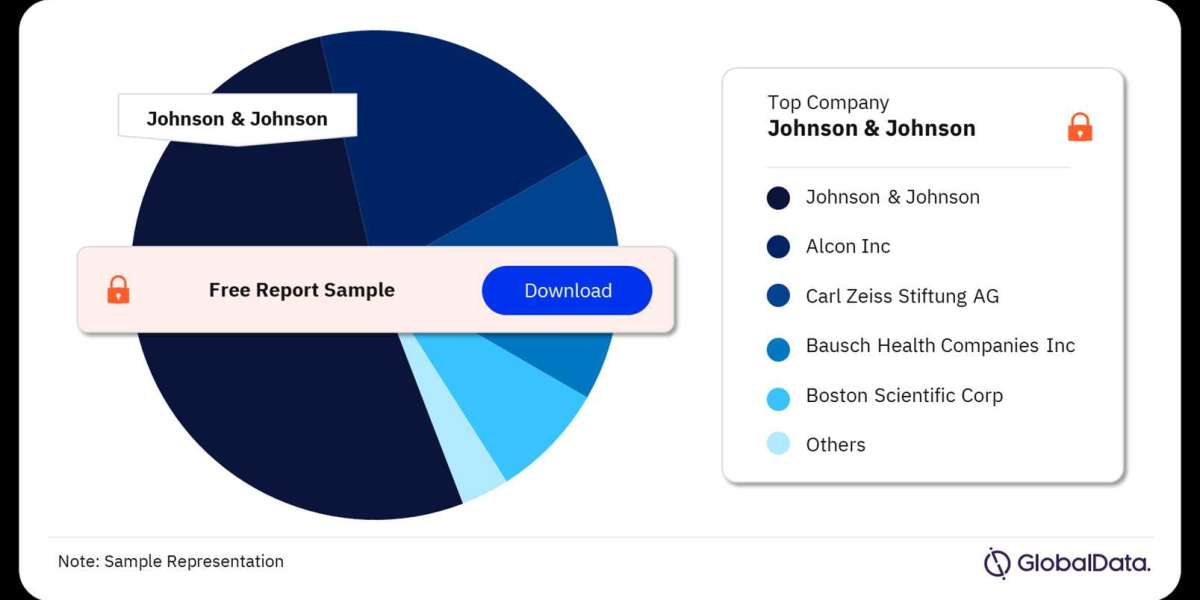The ophthalmic lasers market has experienced significant growth over the past decade, driven by advancements in laser technology, a growing aging population, and the increasing prevalence of eye disorders such as cataracts, glaucoma, and refractive errors. The increasing demand for laser-based vision correction procedures, coupled with the rise in chronic eye diseases, is expected to fuel the growth of this market.

Buy the Full Report for More Insights into the Ophthalmic Lasers Market Forecast
Key Drivers of Growth in the Ophthalmic Lasers Market
Several factors are driving the growth of the ophthalmic lasers market:
A. Rising Prevalence of Eye Diseases
The prevalence of eye diseases, such as cataracts, glaucoma, diabetic retinopathy, and age-related macular degeneration, is rising globally. The aging population is particularly vulnerable to these conditions, fueling the demand for effective treatments. Cataracts are the leading cause of blindness worldwide, and laser-assisted cataract surgery is becoming a preferred choice due to its enhanced precision and faster recovery times.
B. Increasing Demand for Refractive Surgeries
Refractive surgeries, such as LASIK (Laser-Assisted in Situ Keratomileusis) and PRK (Photorefractive Keratectomy), are among the most common procedures performed using ophthalmic lasers. These surgeries are designed to correct refractive errors such as nearsightedness, farsightedness, and astigmatism, reducing the dependency on glasses or contact lenses. The rising number of people seeking vision correction surgeries, especially among younger populations, is a significant growth driver for the market.
C. Technological Advancements in Laser Systems
Advancements in ophthalmic laser technologies have greatly improved the effectiveness and safety of eye surgeries. The introduction of femtosecond lasers, which use ultrafast pulses of laser energy to perform precise cuts in the eye, has revolutionized cataract surgery and refractive surgery procedures. These lasers allow for more precise incisions, reducing the risk of complications and shortening recovery time.
Moreover, excimer lasers, which are used in LASIK and other refractive surgeries, have evolved to offer more accurate and personalized treatments. These innovations have increased the adoption of laser-based treatments, driving market growth.
D. Minimally Invasive Procedures
The demand for minimally invasive surgeries is growing as patients seek treatments with shorter recovery times, reduced complications, and less discomfort. Ophthalmic lasers are preferred for their ability to perform precise, minimally invasive procedures with minimal tissue disruption. As a result, laser surgeries are becoming more popular in the treatment of various eye conditions, further contributing to market growth.
E. Growing Healthcare Infrastructure in Emerging Markets
The increasing healthcare expenditure in emerging markets, particularly in Asia-Pacific and Latin America, is fostering the growth of the ophthalmic lasers market. Improving healthcare infrastructure, rising disposable incomes, and the expanding middle class are enabling more people to access advanced medical treatments, including ophthalmic laser surgeries. This trend is expected to drive significant market expansion in regions such as India, China, and Brazil.
Market Segmentation: Types of Ophthalmic Lasers
The ophthalmic lasers market can be segmented by laser type, application, end-user, and region. The key segments include:
A. By Laser Type
- Excimer Lasers: Primarily used in refractive surgeries such as LASIK and PRK, excimer lasers are the most widely used in the ophthalmic lasers market. These lasers use ultraviolet light to reshape the cornea, improving vision and reducing dependency on corrective lenses.
- Femtosecond Lasers: Femtosecond lasers are used for precise incisions in cataract surgeries and refractive surgeries. These lasers offer greater accuracy and safety compared to traditional techniques, making them popular in both cataract and LASIK procedures.
- Diode Lasers: Diode lasers are used in the treatment of retinal conditions and glaucoma. These lasers are known for their ability to target specific tissues in the eye with minimal damage to surrounding tissues.
- YAG Lasers: YAG lasers are commonly used for posterior capsulotomy in cataract surgery and in the treatment of retinal conditions like diabetic retinopathy and retinal vein occlusion.
B. By Application
- Cataract Surgery: Cataract surgery is one of the most common applications of ophthalmic lasers, with femtosecond lasers being increasingly used to perform cataract procedures with enhanced precision.
- Refractive Surgery: LASIK, PRK, and other refractive surgeries are widely performed using excimer lasers. These procedures help correct refractive errors such as myopia (nearsightedness), hyperopia (farsightedness), and astigmatism.
- Glaucoma Treatment: Diode lasers are used in the treatment of glaucoma, a condition characterized by increased intraocular pressure that can lead to optic nerve damage. Laser therapy can help reduce intraocular pressure and improve drainage in glaucoma patients.
- Retinal Diseases: YAG lasers and diode lasers are commonly used to treat retinal diseases, including diabetic retinopathy and age-related macular degeneration.













